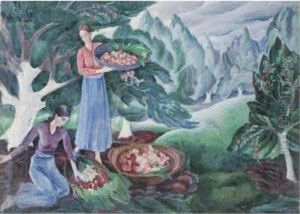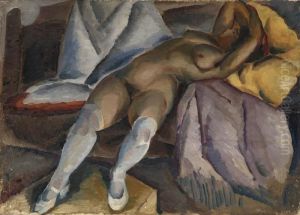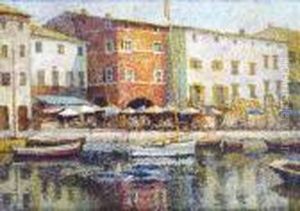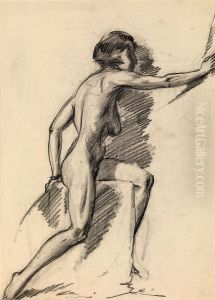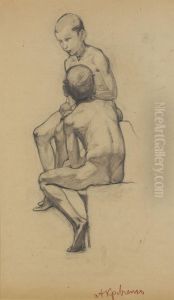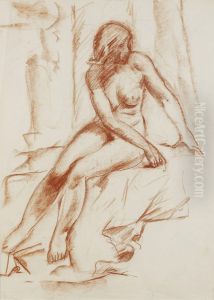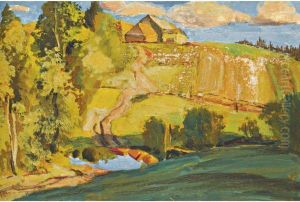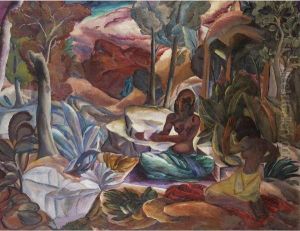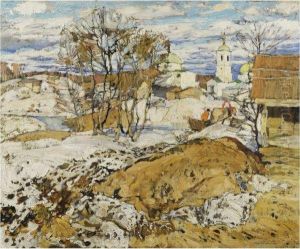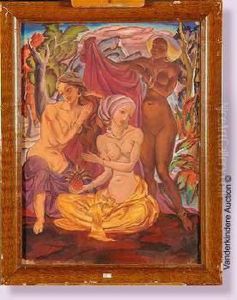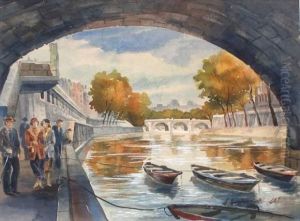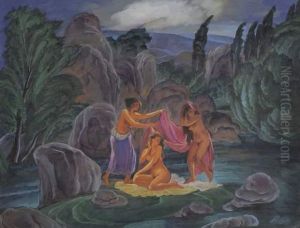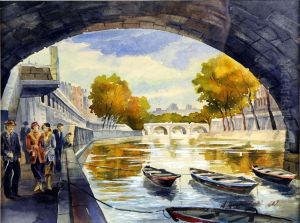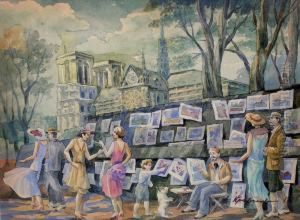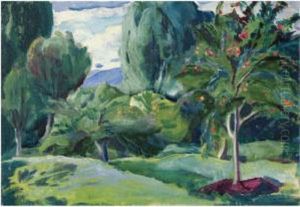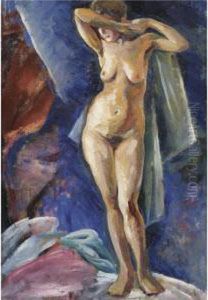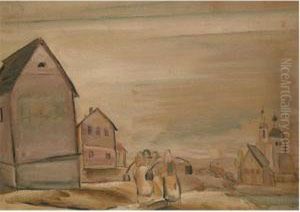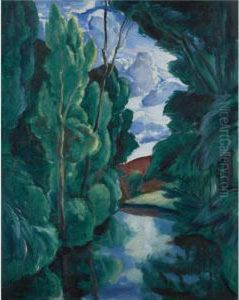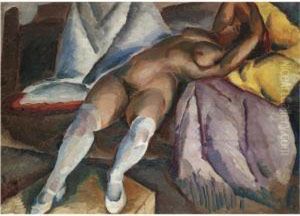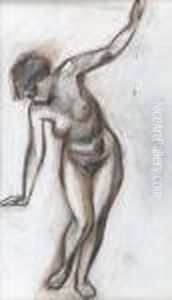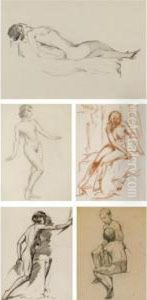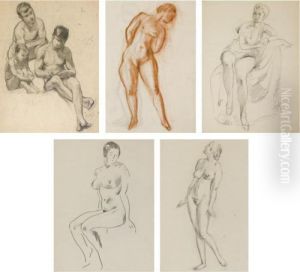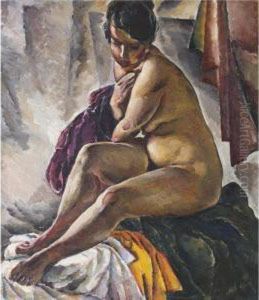Aleksey Ilyich Kravchenko Paintings
Aleksey Ilyich Kravchenko was a notable Russian-Soviet artist, born on February 25, 1889, in the city of Slobodskoy, now in the Kirov region of Russia. He was known for his diverse artistic skills which included painting, graphic arts, and book illustration. Kravchenko’s artistic journey began at the Moscow School of Painting, Sculpture and Architecture, where he studied from 1904 to 1912, and later at the Imperial Academy of Arts in St. Petersburg from 1912 to 1914. During the early stages of his career, Kravchenko was influenced by the Art Nouveau movement, but his style evolved significantly over time. He became known for his unique approach to wood engraving, which became one of his signature mediums. Kravchenko's illustrations were characterized by expressiveness and a focus on the interplay between light and shadow, which added a dramatic effect to the narratives he depicted. Kravchenko was active during a turbulent period in Russian history, which included the First World War, the Russian Revolution, and the Civil War. These events influenced his work, and he became actively involved in the cultural renaissance that followed the Bolshevik Revolution. Kravchenko contributed to the ROSTA Windows project, creating propaganda posters and graphics that aimed to educate and inform the public. His involvement with this project reflected his commitment to the revolutionary cause and the role of art in serving society. In the 1920s and 1930s, Kravchenko continued to work as an artist and educator. He taught at the Higher Art and Technical Studios (VKhUTEMAS) and the Moscow Institute of Fine Arts, sharing his expertise with a new generation of artists. Kravchenko's work during this period included illustrations for classic Russian literature, as well as for children's books, which helped to popularize his art among a wider audience. Aleksey Kravchenko's career was cut short by his untimely death in 1940. Despite the political challenges of his time, he left behind a significant legacy as an artist who was able to adapt his style to various forms of visual art, from painting and graphic design to book illustration. His work remains an important part of Russian art history, reflecting the dynamic changes and cultural developments of the early 20th century.
